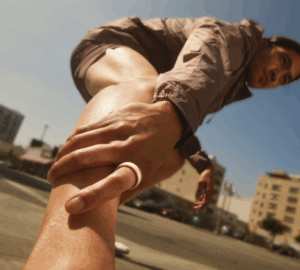We’ve heard from many of you that you’re building new routines to stay healthy at home. We’re excited to hear about your efforts and hope these tips can help you seize each day by leveraging Oura features you already have in the palm of your hand!
Enter your email to receive the latest articles, tips, and offers from Oura
Check In With Your Body During The Day With Moment
Mindfulness, meditation, deep breathing, or a simple break to listen to your favorite song can give you the opportunity to hit pause in your day to check in with your body. As a way to evaluate how you’re doing during the day, Oura’s Moment feature allows you to take a look at your body’s signals during stationary breaks.
What does it measure?
Moment sessions give you more data the longer you sit still:
- 1-2 Minutes: Shows your lowest resting heart rate (RHR).
- 3 Minutes: Shows your lowest RHR plus your average heart rate variability (HRV).
- 5+ Minutes: Shows RHR, HRV, as well as your full RHR and HRV trends for the whole session.
How can I use it?
Moment helps you understand how effective different daytime breaks are by comparing your results over time. For example, is there a breathing practice or soundscape that brings your RHR down? What happens to your body’s signals after a meal, a meeting, or a stretching session? You can read more about getting the most out of Moment here.
If meditation or breathing isn’t for you, we’ve heard you can use Moment to measure a nap (we won’t tell!)
Nudge Yourself to Stay Active With Reminders
Our bodies were made to move, yet our modern lifestyles have us logging a lot of sedentary hours—especially for those whose jobs require them to sit at a desk.
Worried you’re becoming one with your couch? Rather than adding reminders to your to-do list, use Oura’s Inactivity Alerts to give you a gentle nudge when you’ve been sitting still for too long.
How do they work?
Inactivity alerts are friendly reminders to move your legs a bit after 50 minutes of inactivity. Once the alert goes off, you have 10 minutes to reset it. You can reset the alert by taking a quick walk (1-2 min), or by doing low-level activities, such as stretching for a few minutes.
How can I use them?
To enable alerts:
- Tap the hamburger menu in the top left corner of your app to go to “Settings”
- Tap “Notifications”
- Toggle on your Inactivity alerts
Many of our body’s functions perform better if we move around regularly throughout the day. Curious which parts of your body rely heavily on activity? Read on.
Get Credit For Every Action With Manual Workouts
Short spurts of physical activity add up over time and play a big role in helping you meet your weekly goals. Whether you’re jogging around your living room or finding creative ways to use books as weights, we’ve got you covered.
Oura Ring has a unique form of activity detection that is sensitive enough to capture all your daily movements—not just steps. The ring uses a 3D accelerometer, which measures your ring movement—up and down, side to side, and back and forth— and ensures you get credit for small movements like gardening or cleaning.
Oura captures most activities automatically, but for non-step based workouts, and workouts that don’t require a lot of hand movement, you can manually enter activities to further improve the accuracy of your activity score and daily calorie count.
Logging an activity can be a great way to celebrate your hard work – like crossing an item off your to-do list and gaining points against your activity goal!
Which activities should I log?
This system captures most of your daily activities well; however, all accelerometers have more difficulty with activities that involve limited hand movement in one direction (e.g, an elliptical, lifting weights), no hand movement (e.g., cycling), or intense movement that is isolated to your hands (e.g., drumming).
Learn more about how activity trackers measure movement in this New York Times piece.
For non step-based activities that are more difficult to measure (e.g., cycling, yoga, or strength training), manually inputting your activity improves your data.
How can I log activities?
- To add a workout for the current day, tap the + button in the home view.
- Next, select “Add a workout” at the top.
- Find the appropriate workout from the ready-made list, or add a custom workout by selecting “Other”.
- Keep in mind that you can only add/edit workouts for the current day. Workouts will only show up within your Oura App once Oura Ring has been synced with the app during the current day.
Leave Yourself a Note With Tags and Comments
Your daily Oura insights are a snapshot of how your body is doing, but it’s just as important to take note of how you’re feeling as well. Users have told us they like to use the tags feature as a journal, recording a message to themselves like “long day, overworked” and using a tag to flag their mood as “stress” or “sad.”
How do they work?
To add a tag and a journal (comment) for the current day, tap the + button in the home view.
- Next, select “Add a tag” at the top.
- Find the appropriate tag from the ready-made list:
- Energized
- Excited
- Happy
- Relaxed
- Sad
- Stress
- Leave yourself a note about your day by tapping “add a comment”
How can I use them?
Emotions can play a big part in our health and acknowledging them and seeing how your body reflects those nuances can provide insights of their own. Does your sleep improve after an energizing day? Does your HRV decline on stressful days? You never know what patterns you might discover.










